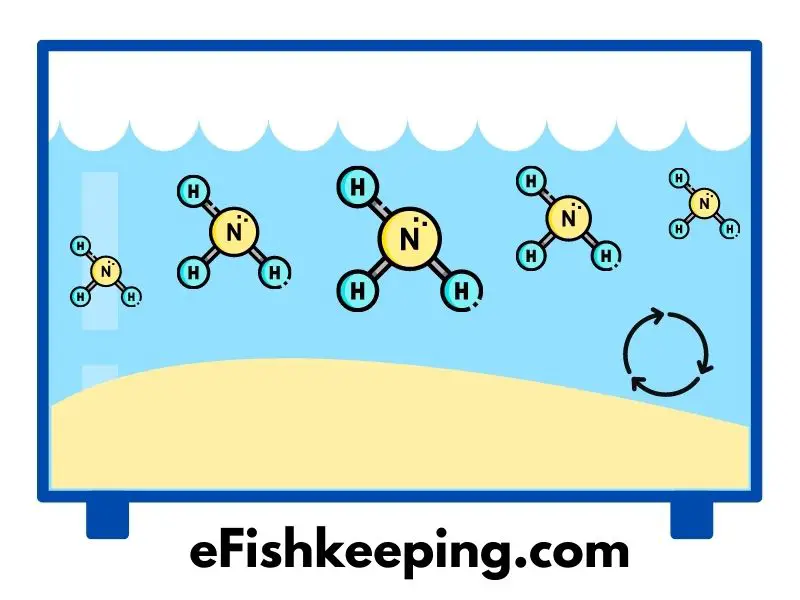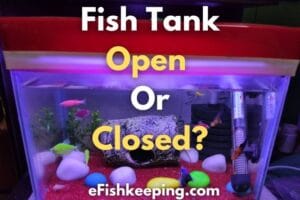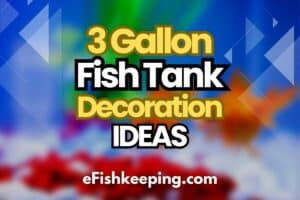Whether setting up a new tank or sprucing up an established one, it’s important to understand what causes spikes in water parameters. This will be important when you add fish, new decorations, additional plants, and when you want to use a sandy substrate.
Does aquarium sand cause ammonia spikes? Yes, it does. For new tanks that don’t yet have aquatic inhabitants, you can pour in the sand and monitor the parameters until they’re tolerable enough for fish. In the case of established tanks, add aquarium sand in small increments to prevent things like an ammonia spike.
However, it’s better to have sand in an aquarium. It’s going to accommodate most fish in mimicking their natural habitat and a less expensive alternative to other substrates, such as gravel. However, there are other problems with sand, too, such as anaerobic pockets that can trap unwanted bacteria easily.
Understanding What Happens When You Add Aquarium Sand
When you replace your current substrate with fresh, live sand, it has the propensity to create a horrific ammonia spike in your aquarium.
This is because a well-established substrate breaks down waste into chemicals that are far less dangerous and toxic. When you switch this out, you’re forcing the tank to start its nitrogen cycle all over again.

This, in turn, leads to ammonia and nitrite spikes that can be difficult to control. So, it’s imperative you plan out everything in a methodical way from the get-go.
Problems with Sand in an Aquarium
Even if you take the necessary steps to switch out the sand, you can still run into problems with serious ammonia and nitrite spikes. This is because sand isn’t as porous as something like rocks and gravel, where air and water can flow through freely.
Sand will create oxygen dead zones, called anaerobic pockets, and this will make oxygen difficult to travel through the tank. This creates unwanted bacteria that will thrive in these pockets from excess food and fish waste. When they release, it will damage the chemistry of the aquarium.
Benefits of Sand in an Aquarium
Having said all that, sand is a far more ideal substrate to have than gravel. This is because there are many fish that like to dig around and others that like to rest at the bottom. Sand is nice and soft; it won’t damage skin, fins, or gills.
Also, certain types of sand, such as coral sand, can help raise the tank’s pH levels to a more beneficial degree.
This will make conditions better for some fish and provide an adequate environment for specific plant life. Plus, sand is going to be more like the substrate of the native habitat for your fish in many cases.
How to Add Aquarium Sand to Control Ammonia; Nitrite Spikes
There is a specific way to add aquarium sand so that you are able to control crazy spikes in the water parameters.
However, this will depend on whether it is a new setup or an established one. For established tanks, there’s the added layer of switching out an old substrate that’s completely different than the sand you want to add.
Initial Tank Setups
If you are in the beginning stages of setting up a tank and want to use sand, you’re in a great position at this point. Remember to add one pound of sand per gallon of water in the tank. This should make it so there will be about one inch of substrate covering the aquarium floor.
However, this is just a guideline, not a definitive one. Therefore, you may have to add more or less depending on the size of your tank, its shape, and the kind of activity your fish like to engage in.
Plants, decorations, and other items will influence the amount of sand you use.
Established Tanks
When you begin to change out the substrate for an established tank, do so gradually and progressively.
Do not add it all at once. This is the best way to control the conditions and keep water parameters within appropriate limits. Also, be sure you clean your filter and other pumps at the same time you add new substrate.
Swapping sand for gravel means you will have to do this in increments over the course of several days. It’s a good idea to get mesh bags and collect gravel in them.
If you’re switching out old sand for new sand, use cotton bags in the same way. Then, remove the bags and put them in a bucket of your tank’s current water parameters.
Work Quick; Precise
Slowly pour in the sand and quickly cover it with the gravel encased in mesh (or sand in cotton). Take care not to bury invertebrates or other bottom feeders. Doing this will allow the good bacteria still contained in the gravel to colonize the new sand.
Over the next month, take the bags out one by one. Also, do meticulous monitoring of the tank conditions on a daily basis.
It might be a good idea to keep a diary or other kind of record during this time so you can understand what’s happening. The idea is not to rob the tank of beneficial bacteria while you change things up.
Troubleshooting Ammonia Spikes from Newly Added Sand
When you notice an ammonia spike from the recently added sand, you have to normalize the levels as quickly as possible. The following gives some troubleshooting suggestions for tackling this. When in doubt, contact an aquatic vet.
#1. Monitor Water Parameters
During the change of old substrate to new sand, you have to monitor the water immediately after adding the sand, along with measuring the water parameters every day. You have to wait for the conditions to normalize before you continue changing it out.
#2. Ammonia Removal Pellets
In the event, you notice a huge spike after your first change, reduce the amount you change out next time. If you notice your tank reaches dangerous levels far too quickly, add ammonia-removing pellets to your filter.
Also, it’s a good idea to do a partial water change once you change the substrate rather than before switching it out.
Fluval Ammonia Remover, Chemical Filter Media for Freshwater Aquariums

Check This Here (on Amazon)
#3. Partial Water Changes
The amount of water you change will depend on how bad the ammonia spike is. That said, never do more than 50% at a time. So, if you have a small rise in ammonia and nitrites, then do about 25% to 30%. If it shifts upwards in a way that presents an immediate threat to your tank, do 40% or 50%.
Read: Why Are My Fish At The Top Of The Tank After Water Change?
#4. Quarantine Stressed Fish
As a last-ditch effort, you can move your fish to a quarantine tank with the old substrate until you can control the conditions in the main tank. This will be particularly useful if you see some of your fish struggling or stressed because of the spike.
Final Thoughts
Aquarium sand can cause an ammonia spike in your tank when it’s brand new. If you’re just beginning to set up your aquarium and don’t yet have fish, you don’t have to worry about this too much. But, if you have an established tank, you have to do this slowly so as not to create problems for your fish and plant life.
Recommended Reading:
Hi! I’m Praveen Ghoshal, the founder of eFishkeeping.com. Inspired by my Dad, I got interested in fishkeeping when I was a kid. Since then, I have been involved with this hobby. Currently, I have 3 fish tanks at our home, and I enjoy this hobby with my full family. Read more about me here.







